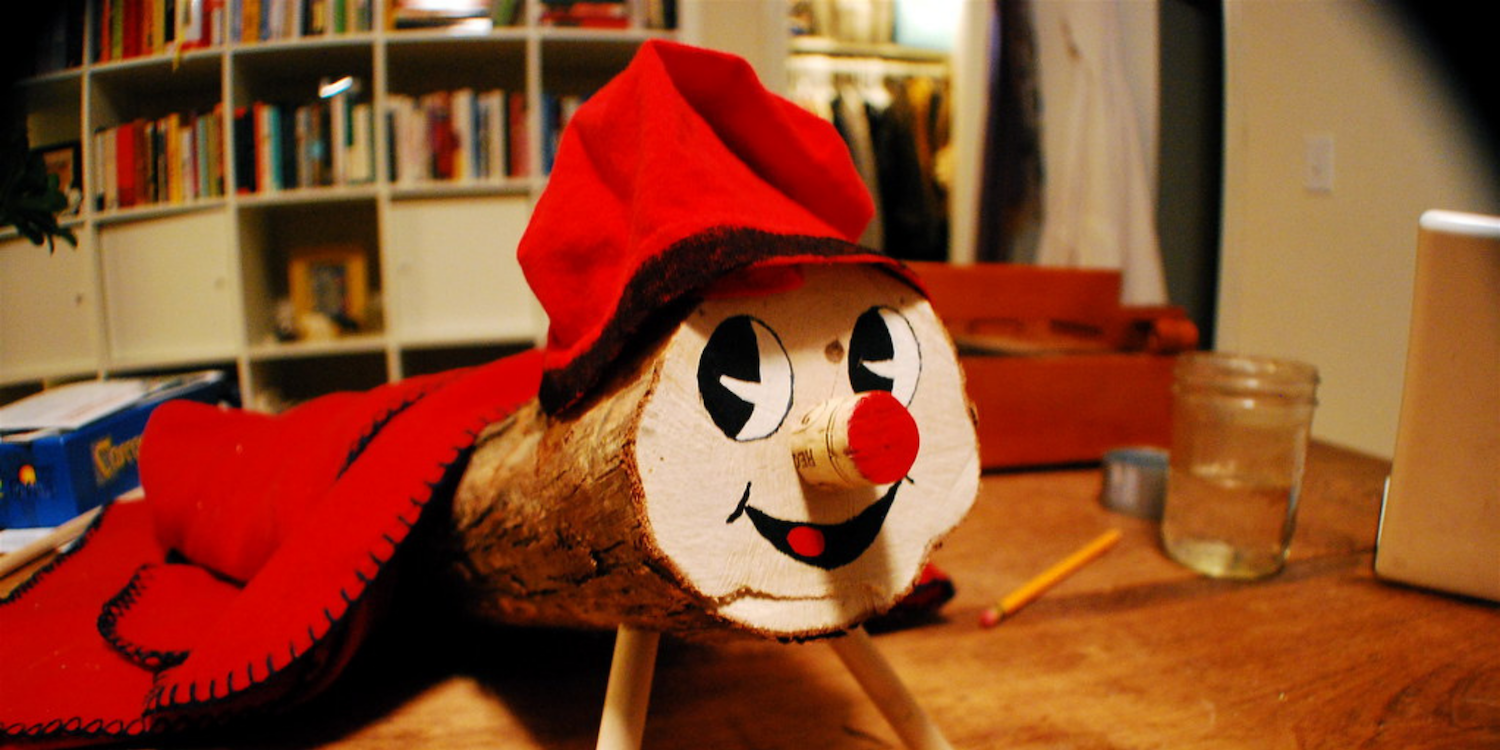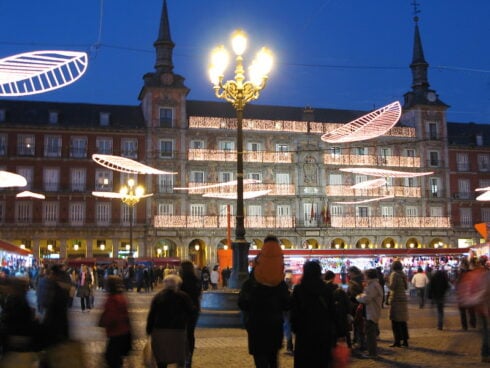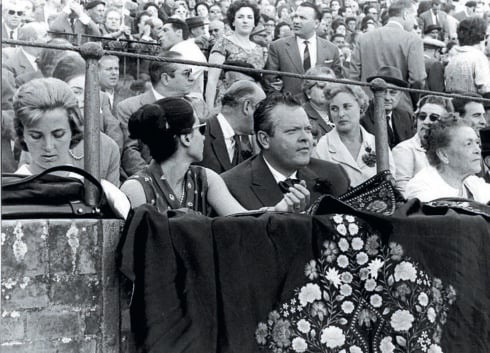CHRISTMAS traditions in Spain are in essence no different from any other nation – people hold on to strange customs, eat and drink a lot of stranger things and ideally end up in stitches of laughter as the brandy goes to grandma’s head.
But if you’re from an English-speaking country the minor details will be shocking: no Santa Claus, for starters.
If you’re visiting Spain, living in Spain or just curious about Spanish culture, it’s important to understand Christmas traditions if you want to get in on the fun with locals.
Here are 11 amusing Christmas traditions in Spain to get you started.
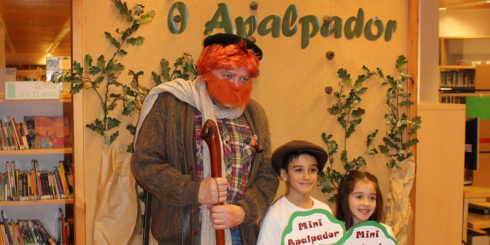
1. El Apalpador
As you read above, Santa Claus ain’t coming to no Spanish towns.
Instead, a coalminer called El Apalpador visits houses in Spain’s most northeastern region of Galicia. Don’t worry, things get a lot weirder here on out.
The Apalpador is typically an old, jovial man with a ginger beard, a pipe, a beret, a green jacket and patched-up trousers who creeps into your children’s bedrooms on the nights of the 24th and 31st of December.
‘El Apalpador’ also means ‘The Tapper’ in English. And The Tapper comes on December 24 and 31 to ‘tap’ the bellies of little children. Why? To check if they’ve eaten enough throughout the year, of course.
Generally kids haven’t eaten enough, so El Apalpador leaves a load of chestnuts and presents and wishes each child a year of happiness and lots of food.
There’s even a song about him that translated into English goes: “Run away my child, go straight to bed! Because The Tapper is coming to tap on your tummies!”
It’s weird, but no weirder to a Spaniard than Santa Claus coming down a chimney with a flying reindeer in tow. Many southern Spanish houses don’t even chimneys, so he’d have to get in through the AC.
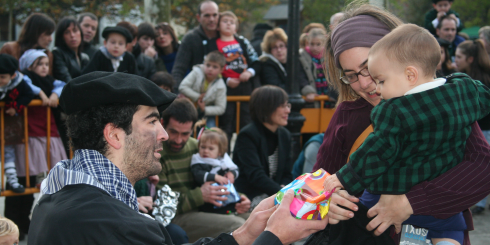
2. El Olentzero
In the Basque Country in northern Spain, there’s another Santa-like Spanish Christmas tradition of the Olentzero.
The Olentzero is another overweight man, who comes to town on the December, 24 smoking a pipe, and with presents for little children.
Similar to the Apalpador, he’s a charcoal burner and legend says he used to carve Christmas toys for children and deliver them in a charcoal sack. When he died, a fairy gave him everlasting life – or so the official version goes.
Many Basque traditions were suppressed during Francoist Spain with unappetising or pagan cultural traits rooted out of Catholic festivals. For example, other traditions say Olentzero is the last of a pagan race of giants.
In certain regions, he’s also not so nice – in Berastegi, if children refuse to go to bed on the 24th, a sickle is thrown down the chimney and the children told that Olentzero will come to cut their throats if they don’t go to sleep.
Thankfully there are no reports of Olentzero ruining Christmas yet!
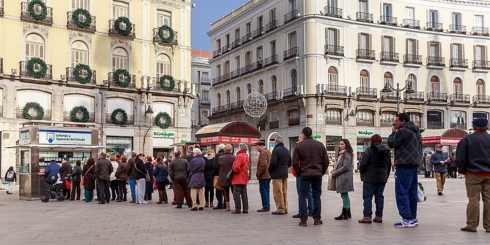
3. El Gordo
Nearly every Spanish person tries their luck at the lottery at Christmas.
National lottery tickets in Spain are generally made up of five numbers, with a ticket for each unique number costing €200. Because the price is so high, most Spanish people will buy a ‘decimo’ or a ‘tenth’ of the same ticket number for €20 each.
Many times work colleagues or popular bars will collectively buy a €200 ticket – if their number wins the €4 million jackpot, then up to 10 people who bought a €20 decimo will receive an equal amount up to €400,000. If you’re in Spain, look out for lottery tickets sellotaped to the wall behind your local bar. Buying a decimo will give you something to get excited about with locals.
The Christmas lottery is called ‘El Gordo’ or ‘The Fat One’ because the jackpot is so seductively big. A total of €2.4 billion is on offer, and up to 26 million décimos are expected to receive a prize from their money back up to €400,000.
Numbers are typically read out throughout the whole morning of 22nd December on live TV, with school children singing the numbers.
The Christmas lottery is outrageously popular and has a long history in Spain dating back to the 18th century. Lottery winners continue to feature in popular Spanish films like Villaviciosa and Si yo Fuera Rico (If I Was Rich).
Villaviciosa in particular is a story about a group of men whose decimos hit the jackpot, but because the men bought their tickets at a brothel they can’t cash in in case their wives find out.
Si yo Fuera Rico is about a relationship-troubled and jobless man who tries to hide a freak lottery win from his ex-wife until divorce plans are finalised. He fails.
If you missed out on a ticket this year, you can always have a go on El Niño on January 6, which might not be as big as El Gordo, but isn’t too far off!
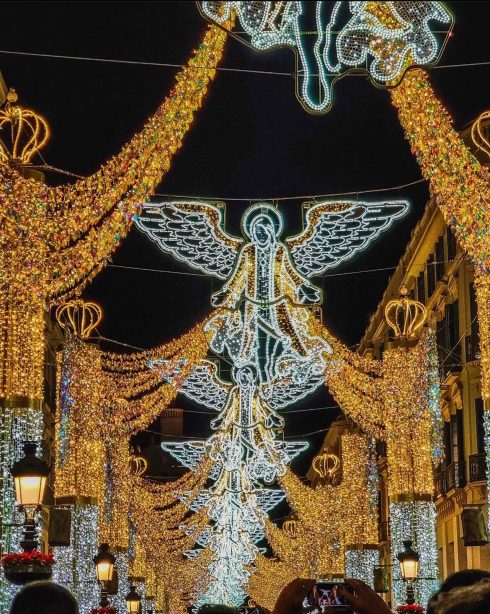
4. Christmas Lights
Christmas lights are a massive deal in many countries with Christian traditions.
Many households in English-speaking countries will outdo their neighbours in the race to have the most stunning Christmas light display on their roofs.
In Spain, however, homeowners leave their towns and cities to light up their main streets, trees and lamp posts for them.
Five cities in particular have become famous nationally and internationally for their dazzling Christmas light displays:
- Malaga is the most famous city in Spain for its Christmas lights, which features 22 giant arches turning a main pedestrianised streets into a ‘Christmas forest’. The town hall also set up a state-of-the-art 3D video projection onto the cathedral.
- Madrid is the second-most famous city for Christmas lights, which turn on around Black Friday at the end of November. In 2021, Madrid has installed 147km of energy-efficient LED lights, as well as lights covering 118 cherry trees and 13 Christmas trees.
- Huelva in southwestern Spain also has a famous Christmas lights display, which in 2021 sees the creation of a special 450m ‘tunnel’ where lights are choreographed to the rhythm of music.
- Barcelona in northeastern Catalunya also has a big Christmas lights display, which in 2021 feature designs from award-winning Spanish furniture and interior designer Toni Arola.
- Vigo, in northeastern Galicia, also makes the top 5 Christmas displays in Spain with 11 million LED lights installed in 2021.
Less well-known to the thousands of tourists who flock to see Christmas lights while munching on chocolate-dipped churros, is that the lights are serious business.
In 2020, the town hall of Alicante received hundreds of complaints from business-owners whose shop-fronts just missed out on the Christmas lighting.
As many as nine business associations complained their members felt ‘abandoned’. Here’s to hoping they’ll get illuminated this year!
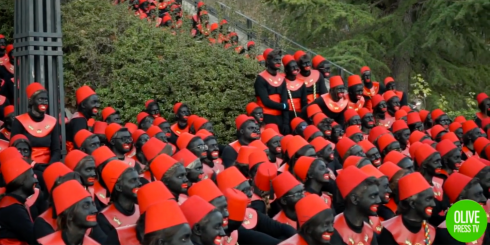
5. The Three Kings
Aside from in northeastern Galicia and the Basque Country in the north, most Spanish children receive their Christmas presents from the Three Kings – Los Reyes Magos – of the Christian Nativity scene.
Christmas traditions in Spain place the date of present-giving as the 6th of January – known as Epiphany in the Christian calendar. January 6 is a public holiday in Spain and many other Spanish-speaking countries.
In villages, towns and cities across Spain, parents and children will gather on the January 5 to watch as Balthasar, Melchior and Gaspar ride in on horses or even camels and set up camp. Festivities continue on the 6th, typically culminating with the Biblical scene where the Three Kings present their gifts of gold, frankincense and myrrh to Mary, Joseph and baby Jesus.
Some regions, however, take it a lot further.
The city of Alcoy, near Alicante, holds one of Spain’s most-famous Three Kings parades where hundreds of school-age children go blackface in bright-red clothes to deliver children’s presents.
The children, known as pajes or ‘pages’, take pre-packaged children’s toys from a wagon before shimmying up a ladder to squealing children on balconies. Families will rent these balconies months in advance to ensure their child gets the full present-delivery experience.
You can watch the action in this Olive Press TV video from 2020.
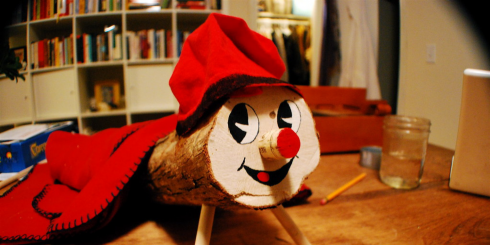
6. Tio de Nadal
You will have heard of the piñata where blindfolded children whack a papier-mâché creation until it bursts open with sweets and candies.
In northeastern Catalunya, however, this tradition has taken quite a tangent.
On Christmas Day, children instead whack a log with sticks while singing a song that begs it to ‘poop’ sweets for them.
Seriously. The song goes: “Poop, log, almonds and nougats, don’t poop herrings, which are salty, poop nougats which are better. Poop, log, almonds and nougats, and if you don’t want to poop I’ll give you a smack! Poop log!”
The bizzareness all starts on December 8, when a log (tio in Catalan) is painted with a face and given a blanket so it won’t get cold. Children have to take care of the log, keeping it warm and feeding it, so it will poop presents for the on Christmas Day.
Parents usually ask their kids to go next door to ‘pray’ the log will give up the goods, meanwhile filling it with sweets.
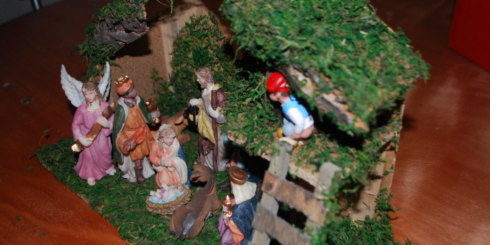
7. Caganer
Continuing on a theme, Catalunya is also famous for a surprise addition to the traditional Nativity scene.
Alongside the shepherds, Wise Men and Mary, Joseph and baby Jesus, you’ll often find a random guy pooping.
The Caganer (literally ‘pooper’) is usually dressed as a peasant in a hat, just with his trousers round his ankles. It’s common for him to be hidden away and to have children find him in a Belen or Nativity scene.
Various theories place the logic of the Caganer as a symbol of fertilising the soil, or as a caricature that can be painted like a celebrity or authority figure and made fun of.
Either way, it’s been around since the 17th century and unlikely to be disappearing anytime soon – Spain is serious about nativity scenes, with Alicante having won the Guinness World Record for the tallest Belen at 18m high in 2020.
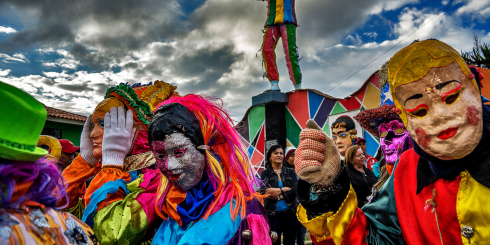
8. Dia de Los Santos Inocentes
April’s Fools Day isn’t a thing in Spain.
Instead, every Spaniard will be watching their back on December 28 for the Dia de Los Santos Inocentes (Day of the Innocent Saints).
It’s common for newspapers and TV channels to make up fake news and pass it off as true, like joking 18 to 29-year-olds will have to do mandatory military service in the next year. Sometimes big businesses get involved too – like Ikea in 2015 who announced building a massive outlet on top of a popular square in Granada.
In the town of Ibi, in Alicante, the day gets even weirder with the town’s judge, prosecutor and mayor going up against protesters who try to take back power in a flour fight.
In Huesca, in the northeast, children traditionally will form groups to pelt each other with eggs.
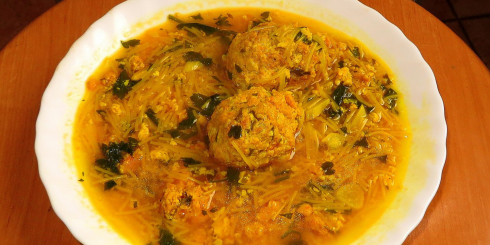
9. The Giant Meatball
According to research by Deloitte, Spanish households spend upwards of €200 on food at Christmas, making them the second-biggest spenders in Europe after the UK.
But those 200 big ones aren’t going on a turkey or even a joint of beef – depending on where you live in Spain, Christmas dinner can typically be one giant meatball.
The Pelotas de Navidad (literally ‘Christmas balls’) are traditional Christmas fare in the Valencian Community and Catalunya, and usually made from mincemeat, breadcrumbs, parsley, cinnamon and seasonings.
But that’s not all – for the giant meatball is usually served with a rich soup made from boiling up beef knees, pork ribs, pork feet, pork fatback, chicken livers, artichoke stalks, turnips, carrots, chickpeas, potatoes and more.
With popular Christmas dinners from other areas of Spain including roast suckling pig and gooseneck barnacles, Christmas really isn’t for the faint-hearted in Spain.
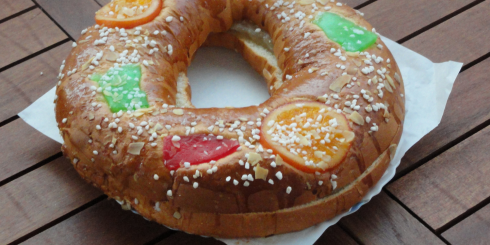
10. The Roscon de Reyes
The roscon de reyes is a round cake with a central hole, not unlike a large donut, and emblematic as the cake of the Christmas traditions in Spain.
Traditionally decorated with candied fruit and with cream in the middle, it’s usually eaten surrounding the Three Kings celebrations in Spain.
Tradition dating back to the Roman times in Spain puts a dried bean in the roscón with the unlucky recipient typically having to pay for the cake. If they can’t pay up, they buy next year’s cake.
It’s the opposite of the sixpence in a traditional English Christmas pudding, where the lucky recipient makes rather than loses their money.
On the plus side, many roscones de reyes will also have a ceramic king baked into it, and the finder will be given an accompanying paper crown as the king of the feast for a day.
One business-savvy bakery in La Bañeza, in Leon, bake a €10,000 cheque into one of their roscónes de reyes each year. Needless to say they sell out quickly and deliver to all over Europe.
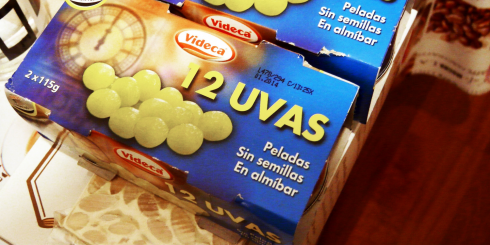
11. The 12 Grapes of New Year
New Year up to the Reyes Magos celebrations are part of a long festive period, all considered part of Christmas traditions in Spain.
Perhaps Spain’s most famous tradition around Christmas is the custom to eat 12 grapes before midnight on New Year’s Eve.
In Spanish they’re known as the ‘Twelve Grapes of luck’ and must be eaten with each clock bell marking the final 12 seconds of the year.
This tradition is quite recent, dating back to the early 1900s, as winegrowers in Alicante learnt to preserve grapes past autumn and thought of stimulating a winter market for their fine fruit.
Winemakers started a campaign suggesting the 12 grapes lead to luck and fortune in the new year, and the tradition has spread across Spain, many other Spanish-speaking countries and even the Philippines.
If you’re lucky enough to be invited to a Nochevieja (New Year’s Eve) celebration in a Spanish household, you’ll most likely be glued to the TV screen as presenters wait for the clock tower in Puerta del Sol, Madrid, to strike.
There are many more Christmas traditions in Spain well worth knowing, and each of Spain’s 17 autonomous regions will likely have its own unique spin.
Here’s to enjoying Christmas either in Spain, with Spanish people or with your loved ones.
¡Feliz Navidad!
READ ALSO:
- All your best photos and videos from Malaga’s Christmas lights switch-on
- Christmas in Spain: Where can you find the best lights and decorations in Europe?
Click here to read more Must Read News from The Olive Press.

